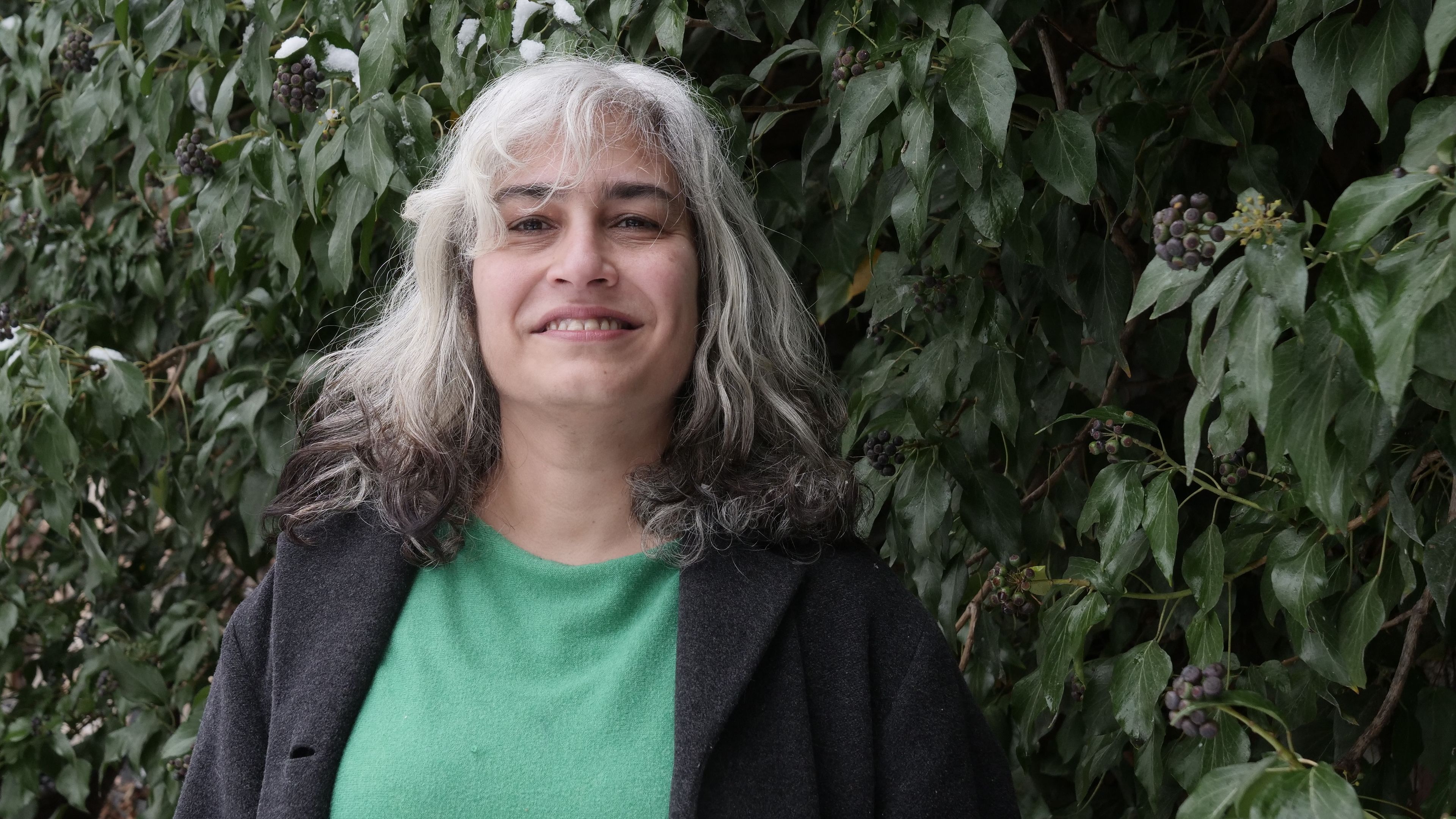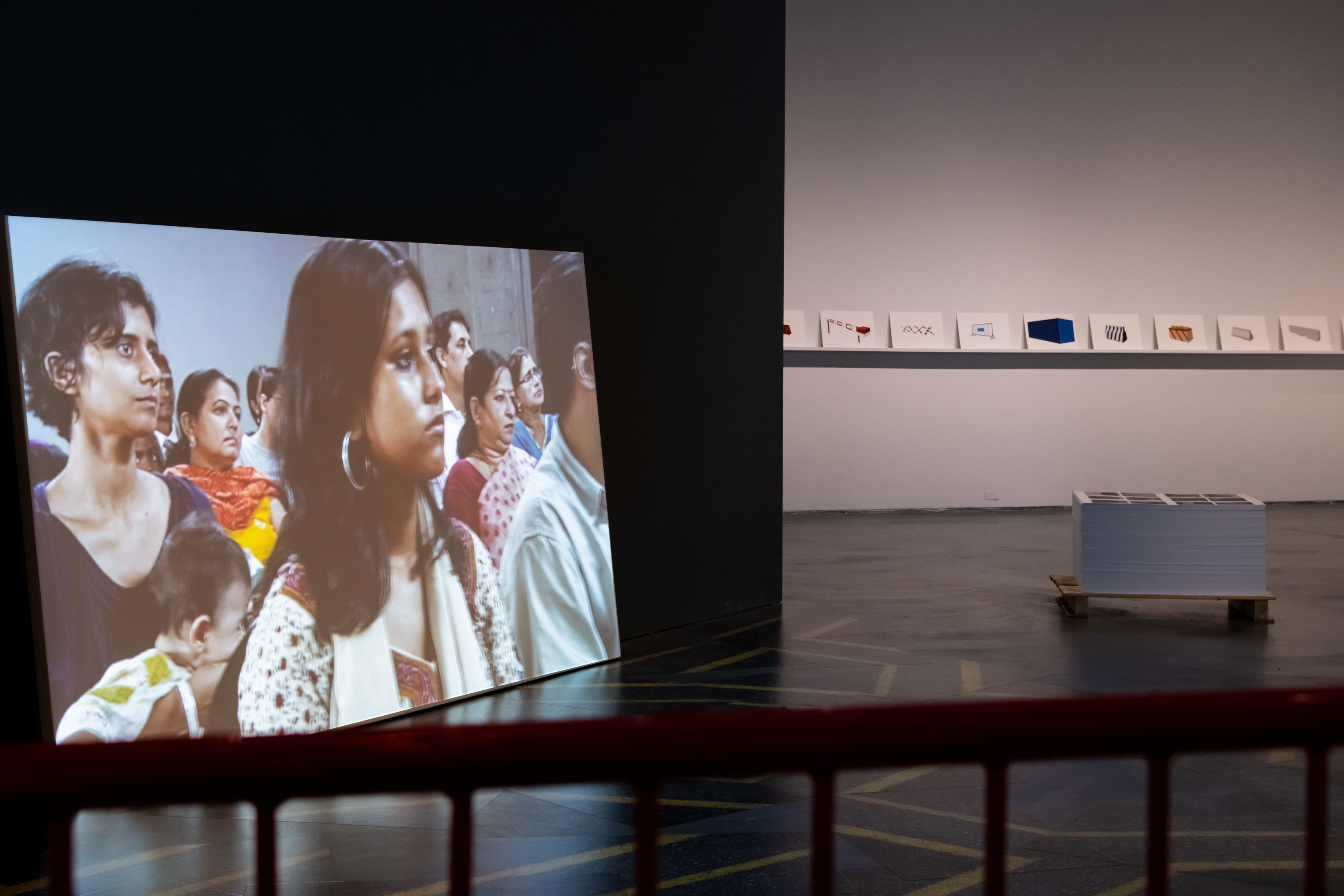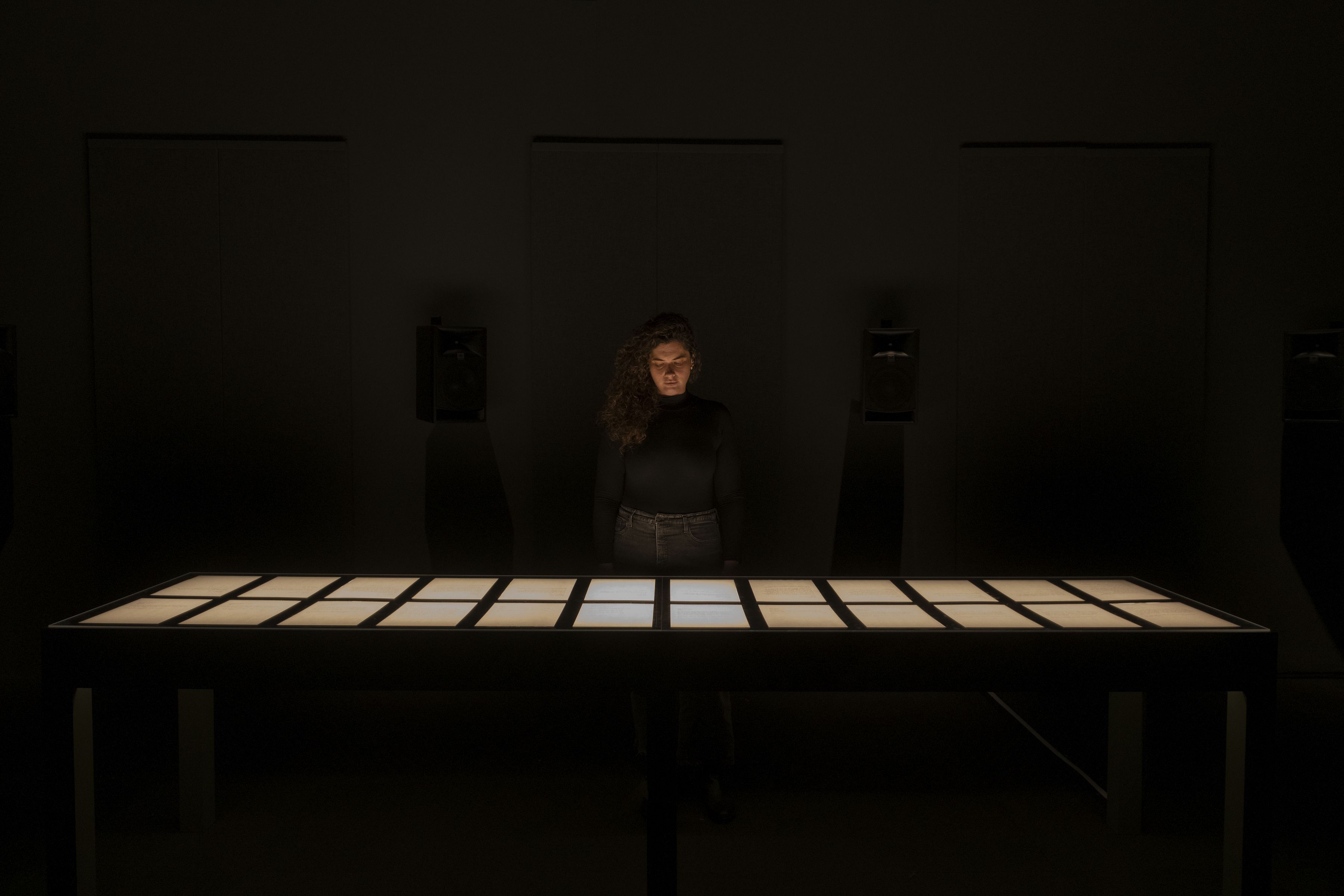Q&A with Bani Abidi
Visiting Artists Program
Distinguished Alumni Lecturer

by Rowan Beaird
Bani Abidi (MFA 1999) has had a big year. Her mid-career retrospective, Bani Abidi: The Man Who Talked Until He Disappeared, opened at the Museum of Contemporary Art Chicago in September 2021. The exhibition, which features video, photography, and sound works, showcases Abidi’s abilities as an incisive storyteller and how she uses art to interrogate power and investigate some of the most pressing issues of our time.
This spring, Abidi will be the distinguished alumni lecturer as part of the School of the Art Institute of Chicago’s (SAIC) Visiting Artists Program on March 1. We talk to her about living abroad, the power of art, and what advice she has for current SAIC students.
What were your experiences like at SAIC as a student?
Chicago was the first placed I lived after leaving Pakistan, so it was very important for me in many aspects. It was about being part of a very international community. And then, of course, there was the [Gene Siskel] Film Center. I actually never studied film and video—I did printing and drawing—but I watched film a lot, and I think that really influenced my trajectory. There was a lot of growing and learning that was happening by being at SAIC.
How did you decide on video as the form that you wanted your art to take?
I understood that time-based artworks had the capacity to hold multiple ideas at the same time. That’s a very simple way to describe time-based performances or film, but that is materially what I learned by watching. So, it was a very intuitive decision. I wanted to use language and sound, and that was the impetus.
The first video I made, which was done with my friend, Joshua Mosley (MFA 1998, BFA 1996), is called Mangoes. It was a very short video about diaspora politics, and I sent it in a videotape to a film festival that was happening in Karachi, Pakistan at the time. It won the best short film award. The fact that I could make an artwork and send it via video was very interesting for me. There’s a lightness to it. People can access it; students can access it. It can actually cross borders politically where customs and all of these things would stop a lot of artworks.

Installation view: Bani Abidi: The Man Who Talked Until He Disappeared, Museum of Contemporary Art Chicago, September 4, 2021–June 5, 2022. Photo: Nathan Keay. © MCA Chicago
Installation view: Bani Abidi: The Man Who Talked Until He Disappeared, Museum of Contemporary Art Chicago, September 4, 2021–June 5, 2022. Photo: Nathan Keay. © MCA Chicago
How do you use humor as a tool?
Humor is a way of bringing down power. My humor is directed at people who just take themselves too seriously. In my case, I think something I only realized in retrospect—when I put together these shows that I’ve been having—is that it is kind of laughing at the power that men assume in terms of political spaces, even in the art world where man projects itself. It’s about dismantling and analyzing the bogusness of power. I’m doing that by laughing at somebody, and it’s very disabling for the person. It’s so infuriating if somebody is snickering or laughing at what you’re saying. Also, I think there’s an openness to an idea if you float it as a joke. There’s a lightness to it, so it’s less didactic.
What role do you feel like politics plays in art and vice versa?
That’s an interesting thing to consider. Because I’m Pakistani, there are class discrepancies. There’s a wide body of the population that is living below the poverty line or is not educated. This idea of the artist as somebody socially responsible comes up a lot. If I’m doing something, how does it feed and help society? I think ultimately all of us read, look at art, and watch films so that we can get through this time. Art helps us all get by. Maybe it’s reiterating something we already know, but maybe it helps us understand things about ourselves.

Installation view: Bani Abidi: The Man Who Talked Until He Disappeared, Museum of Contemporary Art Chicago, September 4, 2021–June 5, 2022. Photo: Nathan Keay. © MCA Chicago
Installation view: Bani Abidi: The Man Who Talked Until He Disappeared, Museum of Contemporary Art Chicago, September 4, 2021–June 5, 2022. Photo: Nathan Keay. © MCA Chicago
You’re returning to SAIC as part of the distinguished alumni lecture series. What advice do you have for our students who are just beginning their journey?
I’m very, very wary of hyper-professionalism in the art world. The art world is way too corporatized and branded. People brand themselves, and I think that all artists should at some point totally reject the idea of being an artist. And then, start picking up the threads of what it means to them and build it back up.
Also, as somebody who was an international student, there’s this question of translation, and people have to be very comfortable about not belonging in one place and belonging in other places. We live in a world that is so different, and I think you just have to succumb to non-translatability. It’s okay to not be current, to have to explain yourself, to let people do their own work of understanding what you’re trying to work with. It’s ultimately about finding audiences that get exactly what you’re doing. There is no one art world and there is no one art history. How does your art affect the West? Everyone asks me that. I’m not interested in changing the Western canon at all. There is no one canon, and there are multiple spaces and histories. The world is way too complex for us to all try to squeeze it into a neat package. ■

